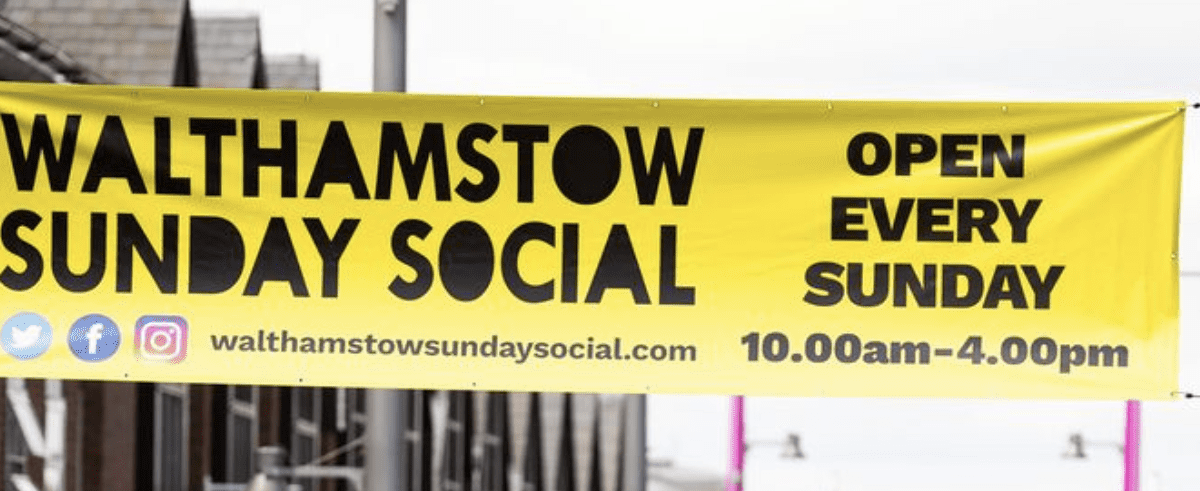What street food can teach us about good fundraising
There is a Sunday street food market near where I live.
It’s not called ‘Come and awkwardly attempt to eat food standing up that would be easier to eat sitting down, but it doesn’t matter because you’ll feel like you’ve done something with the day’.
It’s called Sunday Social and it is a fantastic name.
It's fantastic because it gets to the heart of what the offer is at a street food market – doing something enjoyable with other people. They aren’t promoting the food, they aren’t promoting the location, they are promoting their customer's needs. That's something that fundraisers can learn from.
Think for a second how a typical individual giving brief might describe a street food market...
We’d like to tell donors about our new initiative whereby we bring an eclectic range of food vendors together in one place and they compete for trade. It allows the beneficiaries (in this case hungry customers) to feel empowered as they decide what to eat, where and when. If they want to, they can eat multiple cuisines, or take food away to eat later. It takes place on Sunday between 10 - 2 in a convenient location with excellent transport links.
We’ve seen this concept work well for other sectors and we’d like to take a share of that market. We think it will be particularly attractive for our target audience of urban professionals and young families.
It is very hard to get from that brief to a name like Sunday Social. You’d probably end up with Choose Eating or something similarly awful – as we all choose to eat all the time.
The point I am stretching an analogy to make, is that we need to package up fundraising in ways that answer our donor's needs rather than simply describe what a charity is doing.
A perfect example is Marie Curie’s Great Daffodil Appeal. This, in itself, says nothing about what Marie Curie actually does. There's nothing about what the funds from the appeal will be used for or even how it may help someone. However, it does take some important donor needs – to be part of something meaningful, to be given space to pay tribute to a loved one, to express solidarity with others – and delivers this within a month of fundraising activity. It assumes that people know what the daffodil symbolises and that they have their own reason to care about supporting Marie Curie’s work. It treats potential donors like friends rather than prospects, and again it is a fantastic name.
Not everything we do in fundraising has a name of course. A recruitment campaign doesn’t need a catchy title, but it does need an offer, it should very clearly tell donors what their gift will achieve and not just describe what you – as the charity – needs. And again, here we can learn a lot from street food (yes, really!).
If you have been to a street food stall, I doubt that you called it by its actual name. If you are like me you will narrow each one down to their primary ‘offer’ – The Bao Bun one, The Falafel stand, The Calzone guy etc. Personally, I like the Calzone guy as there is no queue and it is easy to eat one handed while holding a baby. It also meets my key need states (speed, convenience, cheese).
The point is that these places serve more than those key dishes, but very few people care or notice. People respond to the primary offer and define the stand by that single item. Nothing more complicated is needed.
It’s the same in recruitment. Identify your charity's primary offer and (importantly) whether people like it. If you think they do, package it up and ask people to give – that's it.
As a charity, there is nothing wrong with being known as the ‘tiger one’ or the ‘school people’ or the ‘Christmas dinner one’ as long as your work is valued.
The most successful food stand you know is probably called something like the ‘Taco one’ by everyone who goes there. And even then, it doesn't matter that much as no one actually goes just for the tacos.
They go to have a good time with some friends and experience something that makes them feel good – a Sunday social.
Tags In
Related Posts
4 Comments
Comments are closed.
The Essentials

Crack the Code to Regular Giving: Insights, Strategies, and a Special Giveaway!

‘Tis Halloween. Keep to the light and beware the Four Fundraisers of the Apocalypse!

Why do people give? The Donor Participation Project with Louis Diez.

A guide to fundraising on the back of a postcard

What does the latest research tell us about the state of fundraising?







[…] What street food can teach us about good fundraising […]
[…] post What street food can teach us about good fundraising appeared first on […]
[…] […] post What street food can teach us about good fundraising … by What street food can teach us about good fundraising – File4Me.com […]
[…] […] […] post What street food can teach us about good … by What street food can teach us about good fundraising – FileJunction.com […]